When choosing the best winter plants for borders, start with evergreen shrubs and trees, which will add an essential backbone to your garden. ‘Many trees and shrubs have brilliant bark or colorful flowers and are at their best in winter,’ says James.
Underplant trees with woodland bulbs and hellebores, and consider flowering plants that will add fragrance to enliven the senses.
1. SNOWDROPS

Whether planted in borders or in drifts beneath trees, milky white snowdrops add a magical air to winter gardens.
‘Snowdrops are an absolute must; they lift the spirits like nothing else and remind us of the delights of spring to come,’ says Norton.
For a long, successional display that lasts from mid winter to spring, choose a few different snowdrop varieties, although you should prioritize the common species Galanthus nivalis. ‘In time it will self-seed and colonize, creating an ever more spectacular snowy carpet,’ adds Norton
Planting young snowdrops ‘in the green’, in springtime, is the best way to establish them. But planting the bulbs in the fall is less expensive. ‘For a natural look, cast the bulbs and plant them where they fall,’ says Period Living’s gardens expert Leigh Clapp.
Combine snowdrops with other winter-flowering plants for the best result. ‘Snowdrops mixed with winter aconites and hellebores will create a really beautiful winter sight,’ says Norton.
2. DOGWOOD
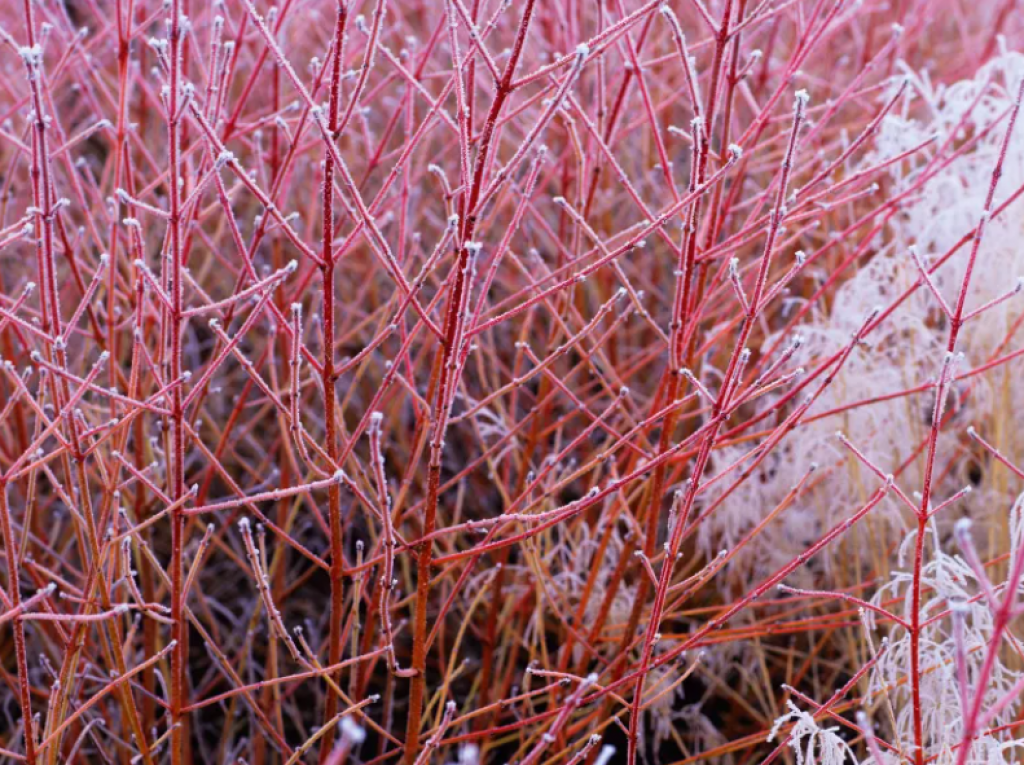
The common name for the cornus family of plants, dogwoods are hardy deciduous shrubs, and add a dramatic feature to gardens during winter, when their foliage fades to reveal vibrant stems.
‘Dogwoods are really stunning, especially if grown in groups,’ says James. ‘Try Cornus ‘Flaviramea’ for lively yellow-green stems and Cornus ‘Winter Beauty’ for orange-yellow. Those of Cornus ‘Siberica’ are bright scarlet.’
For a stunning contrast with other winter favorites, ‘plant dogwood as an informal hedge and underplant with snowdrops,’ adds Clapp.
Bear in mind that dogwood needs coppicing hard in early spring, to keep it looking its best. ‘To encourage vivid color every year, simply prune the shoots back hard to 8-12 inches from the ground,’ says James.
3. HELLEBORES
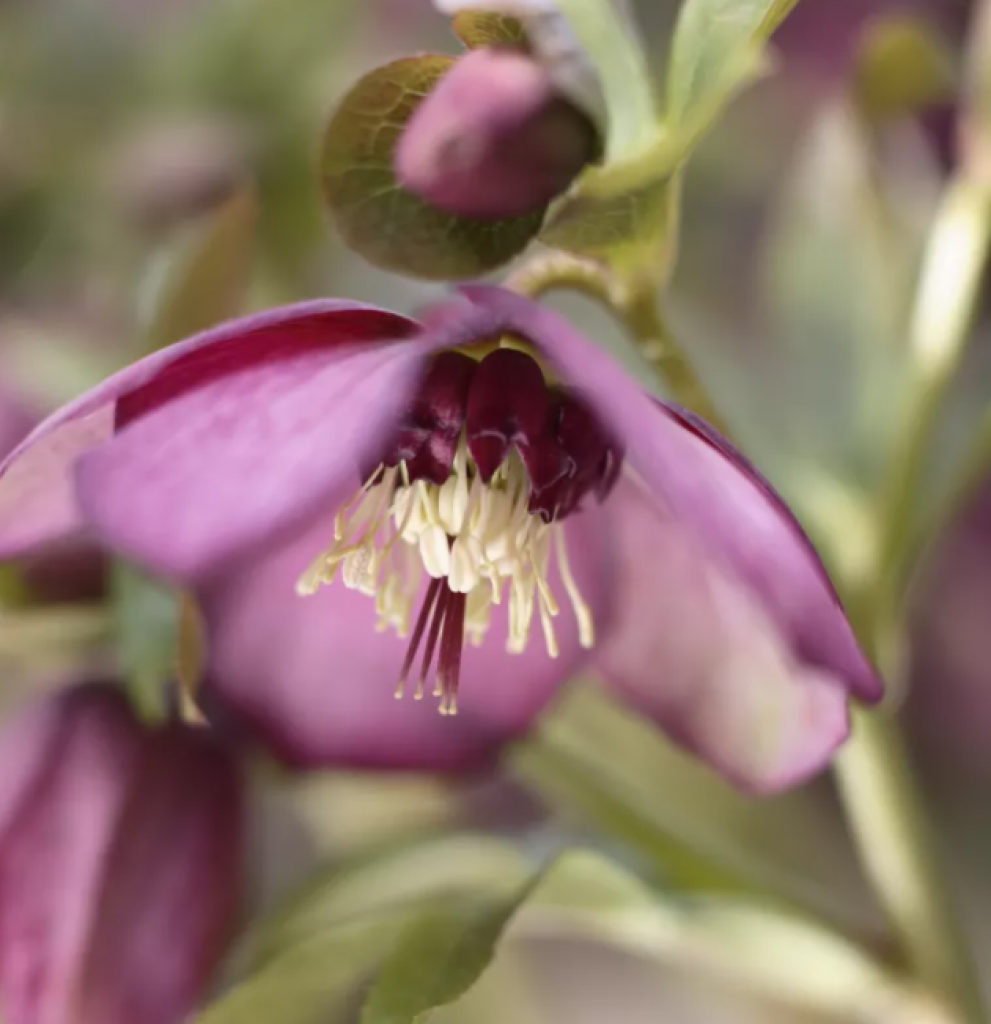
Also known as Christmas roses, hellebores are some of the best winter plants for sheltered gardens with lots of trees, as they need a semi-shaded position.
‘Hellebores are highlights of winter gardens – look to the pure white helleborus niger and then the orientalis hybrids, with their many different colors and markings,’ says Norton.
The low-growing plants are also beloved of bees and other pollinating insects, providing much-needed food at this scarce time of year.
‘Hellebores tolerate most soils but do best in rich, moist, free-draining soil, or in raised beds so you can admire the nodding flowers more easily,’ says Clapp.
To maintain hellebores, deadhead the flowers once they have died back in the spring, and in winter remove any dead leaves.
4. MAHONIA
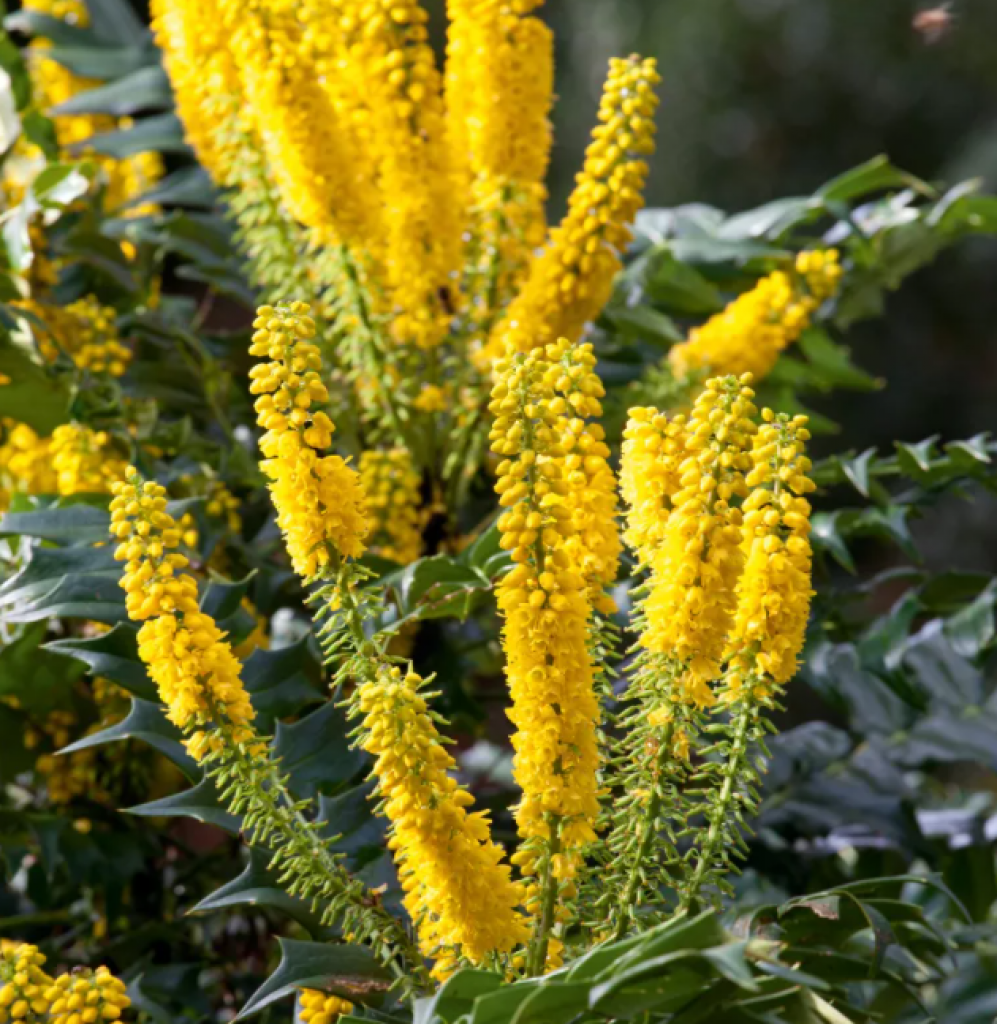
Mahonia makes a fabulous backdrop to other plants in a winter garden, and depending on the variety works at the back of a border or as ground cover.
As an evergreen shrub, mahonia adds structure and color year round with its pinnate leaves. In winter the plant yields spikes of delightfully fragrant flowers, which provide food for bees. Then these fade in the spring, to be replaced with clusters of deep purple berries in the fall.
‘Mahonia is good in well-drained or moist soils in shade or part-shade,’ says Clapp. ‘Cut back after flowering to keep it to a manageable size.’
5. HEATHER
Heather is an often underrated plant that plays an important part in winter gardens. ‘It injects color that stands out against the seasonal browns and greys, or the fiery red winter stems contrasting with frosty or snowy backdrops,’ says Clapp.
‘By planting a variety of heathers, you can entice bees into your garden year round, benefit from evergreen ground cover, and enjoy the range of colors of both blooms and foliage through the seasons.’
It’s best to plant heather in the fall or early spring. Many varieties – namely calluna – thrive in acidic soil, while some types – erica – can grow well in neutral to alkaline soil. So it’s important to know what type you have.
BEST WINTER PLANTS FOR POTS
When selecting the best winter plants for pots, bear in mind that most plants grow very little at this time of year.
‘Start with good-sized plants and don’t be afraid to cram them in closer than normal for instant impact,’ says James.
Perhaps the best thing about growing winter plants in pots is that you can completely control their soil type and position, moving them around the garden to suit.
‘Don’t forget to position containers where they’ll get as much light as possible,’ adds James.
1. PANSIES
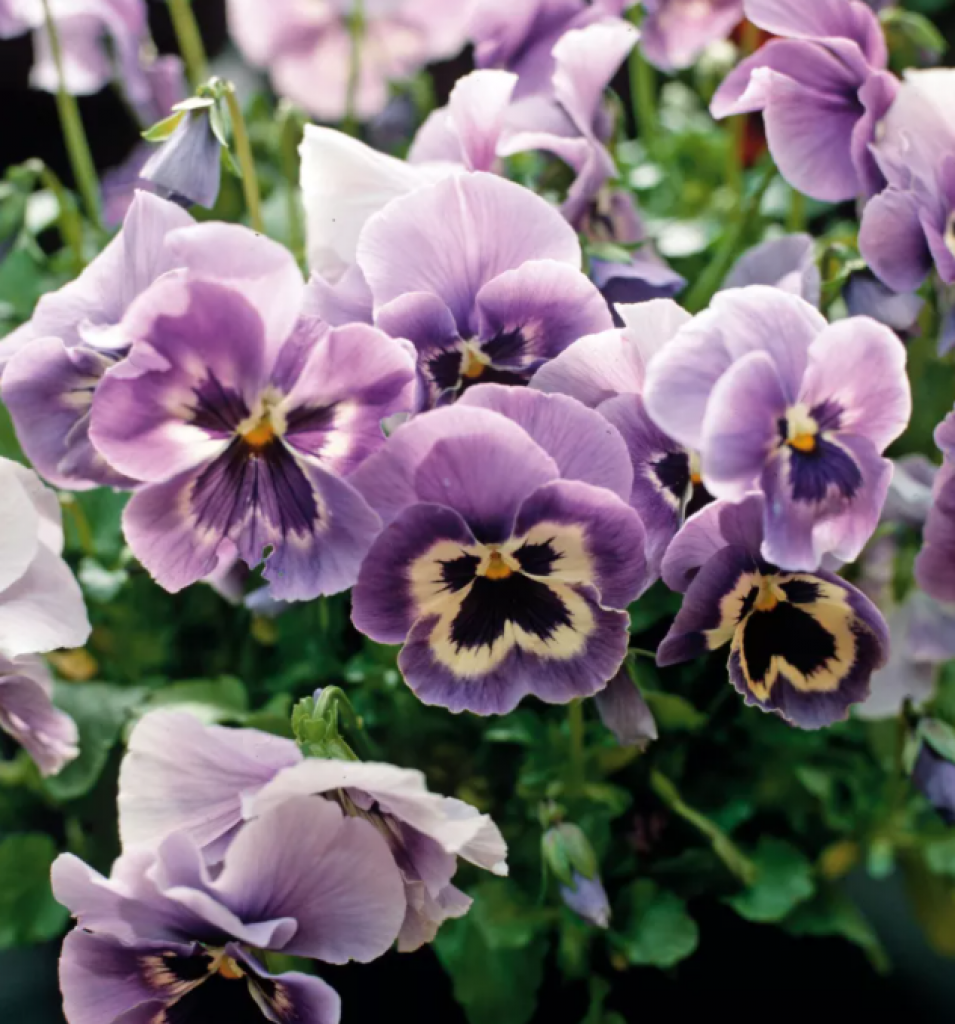
Part of the viola family, pansies are an icon of winter gardens. ‘They are simply my favorite winter plants for pots. With beautiful and colorful flowers that thrive in cool temperatures, you will have a cheerful display during the winter,’ says Codey Stout, head operations manager at TreeTriage.
Pansies will flower in mild spells right through to early spring. ‘Plant them en masse in containers with other traditional favourites, such as cyclamen, violas, polyanthus and primrose, to maximize the effect,’ adds James.
Plant established seedlings in pots in the fall, and they will be thriving by the time winter arrives.
‘Ideally, put your pots of pansies where they can get the morning sunlight, then move them to the shade to avoid the heat in the afternoon,’ says Stout.
2. CYCLAMEN

Cyclamen are wonderful for providing cheer in the garden at the bleakest time of year, with blooms of white, pink or red.
While they can naturalize in the ground, they work beautifully in pots and hanging baskets, and can even be used as part of winter houseplant displays.
Cyclamen coum is a particular favourite of plantswoman Sarah Raven: ‘It’s almost as lovely in leaf through the fall as it is in flower in early spring,’ she says.
‘Along with early snowdrops and aconites, the miniature flowers can’t help but lift winter-dampened spirits, and the three together, cut and arranged in a small glass, is cheer-giving.’
Plant young cyclamen in the fall, or as tubers for flowering the following year. Position pots in a sheltered site, protected from heavy rain, and deadhead spent blooms to prolong flowering.
3. PRIMROSES

Winter-flowering primroses are brilliant at brightening up those dull corners in the garden, as they thrive in part-shade. ‘Primroses add light to dark areas in tones of white, yellow, cream, pinks,’ says Clapp.
They are perennials that are well equipped to survive harsh winters, and will continue to multiply year after year.
Primroses should ideally be planted in early fall – choose two or three varieties for a successional bloom that lasts from late fall to early spring. Some varieties, such as Everlast, will flower for as long as six months.
The plants don’t like to sit in water, so make sure you choose a well-draining potting mix when planting primroses in containers.
4. CAMELLIAS
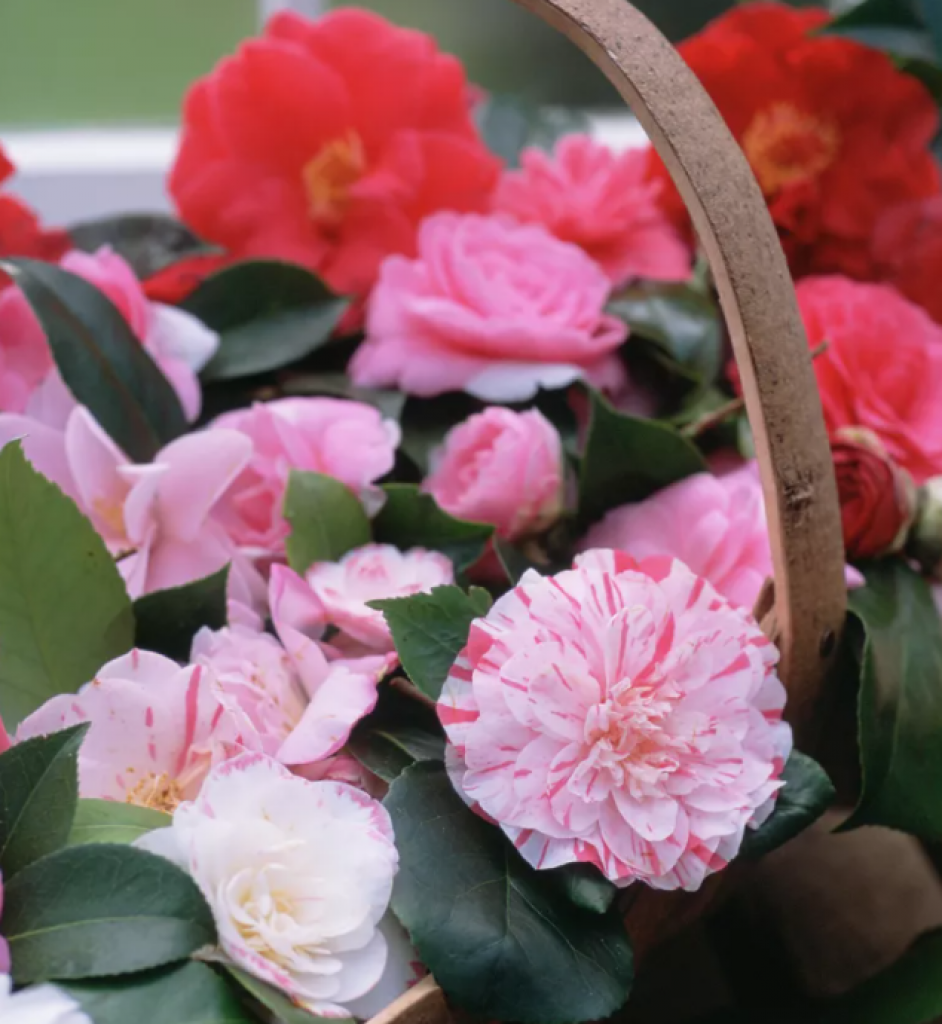
With their fabulously flamboyant flowers, winter camellias are one of the first blooms to break through in later winter or early spring, and grow very well in pots. However, if you want them to flower even earlier, opt for Camellia sasanqua varieties, which bloom through fall and winter.
The plants prefer well-drained acidic soil, and are best planted in the fall, so they can establish their roots before the frosts set in.
You will need to pot camellias in fresh potting mix on every 2-3 years, once they have outgrown their containers. Position them in a partially shaded spot, as they can struggle in full sun.
It’s also important to know how to prune camellias to get the best out of these delightful plants.
5. WINTER ACONITES
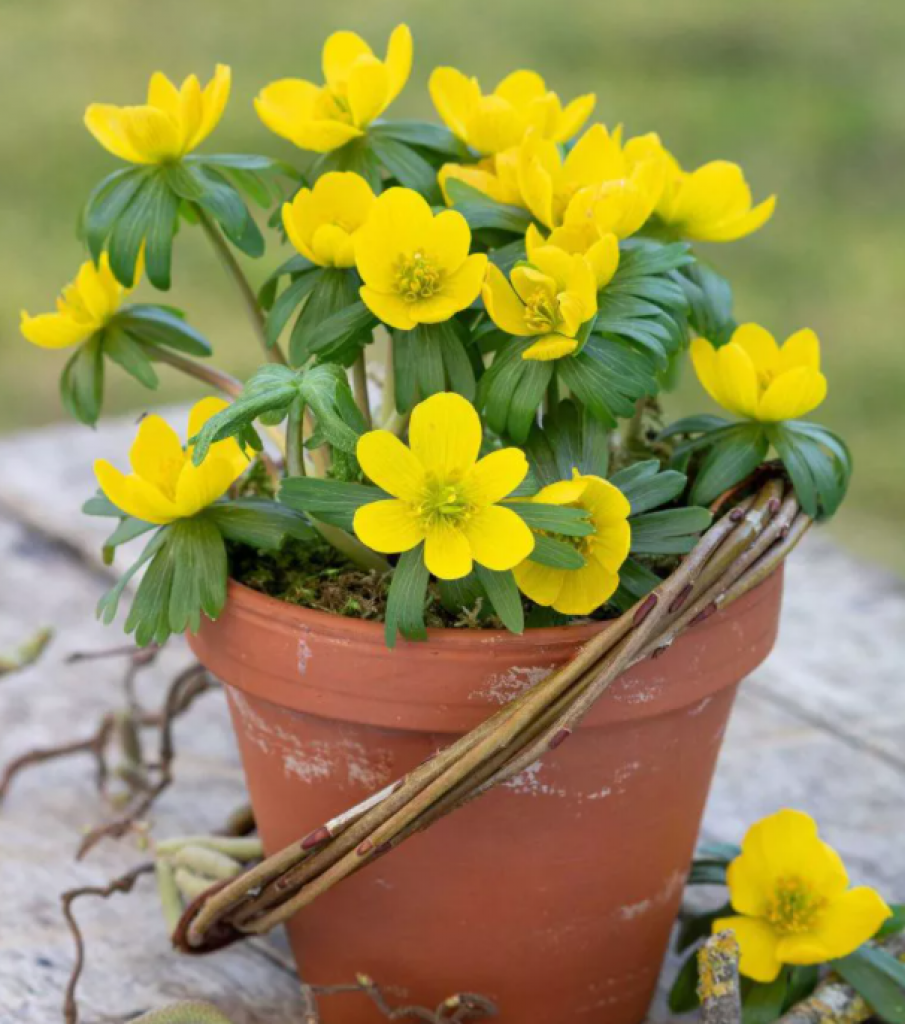
Originating from shady woodlands, winter aconites add a cheery dose of sunshine on the darkest of days, flowering in January and February. Their shallow roots make them perfect for pots, and they require minimal attention.
Plant in moist but well-draining soil, and position the pot in a partially shaded spot. Like snowdrops, they are best planted ‘in the green’, just after flowering, but you can alternatively plant bulbs in the fall.






